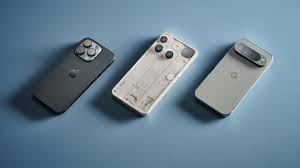In the realm of craftsmanship, engraving has stood the test of time as a testament to human skill and precision. Traditionally a meticulous process performed by skilled artisans, engraving has evolved with the advent of technology, giving rise to handheld devices that promise a blend of tradition and modernity. In this exploration, we delve into the pros and cons of engraving with a handheld device, shedding light on the advantages and challenges of this innovative approach to an age-old craft.
Pros:
Versatility & Mobility
One of the standout advantages of using a handheld engraving device is its portability. Unlike traditional, stationary, and often cumbersome engraving machines, handheld devices allow artisans to work on various surfaces without being tethered to a fixed location. This versatility opens new possibilities for artists and craftspeople, allowing them to take their skills on the go. When you engrave on various materials and in different settings, a quality handheld laser engraver could be the versatile option you need due to its mobility.
Ease Of Use
Handheld engraving devices are designed with user-friendliness in mind. With intuitive controls and ergonomic designs, these tools are accessible to seasoned professionals and beginners alike. The learning curve is significantly reduced, enabling artists to grasp the basics and produce intricate designs relatively easily and quickly. This accessibility democratizes the art of engraving, inviting a broader audience to engage in the craft.
Cost-Effective Solutions
In comparison to traditional engraving machinery, handheld devices are often more cost-effective. The initial investment is lower, making it a viable option for small businesses, independent artists, and hobbyists. The reduced operational costs contribute to a more sustainable and economically feasible approach to engraving, allowing individuals to pursue their passion without breaking the bank.
Precision & Detail
Handheld engraving devices boast impressive precision, allowing artisans to create intricate and detailed designs accurately. The controlled movements offered by these tools enable engravers to execute fine lines and delicate patterns, achieving a level of detail that was once only possible through manual techniques. This precision opens new creative possibilities and expands the horizons of what you can achieve in engraving.
Adaptability To Various Materials
Whether working on metal, wood, glass, or plastic, handheld engraving devices are designed to adapt to various materials. Their adaptability makes them versatile for artists and craftspeople exploring different mediums. The ability to engrave on diverse surfaces enhances the potential applications of the craft, allowing for unique and personalised creations.
Cons:
Limited Power & Speed
While handheld engraving devices offer mobility, they often come with limitations in terms of power and speed. Handheld devices may take longer to complete a project than industrial-grade engraving machines and may struggle with more robust materials. This limitation can be a drawback for professionals working on large-scale projects with tight deadlines.
Size Constraints
While advantageous for portability, the compact size of handheld engraving devices can also be a drawback. Engraving larger items or working on expansive surfaces may prove challenging with a handheld tool. Artists and craftspeople accustomed to the spacious work areas offered by traditional engraving machines may find the confined space of a handheld device restrictive for certain projects.
Battery Dependency
The mobility of handheld engraving devices is contingent on their power source, typically rechargeable batteries. This dependency on batteries introduces the risk of running out of power mid-project, potentially disrupting the engraving process. This dependence on batteries may pose a logistical challenge for those engaged in extended sessions or working in areas with limited access to power outlets.
Noise & Vibrations
Handheld engraving devices, especially those with high-speed capabilities, can generate noise and vibrations during operation. It can be a concern for artists working in shared spaces or residential areas where noise pollution is a concern. Additionally, prolonged exposure to vibrations may lead to discomfort or fatigue for the engraver.
Maintenance & Durability
While handheld engraving devices are generally designed for ease of use, they still require regular maintenance to ensure optimal performance. Wear and tear on the tool’s components, such as the engraving tip, may necessitate replacement over time. The durability of handheld devices may not match that of heavy-duty engraving machines, requiring users to invest in periodic upkeep and replacement parts.
Engraving with a handheld device presents a dynamic fusion of tradition and innovation, offering advantages and challenges to craftspeople and artists. Ultimately, the choice between handheld devices and traditional engraving machines depends on the preferences and requirements of the individual artisan. As technology advances, handheld engraving devices will likely evolve to address current limitations, further bridging the gap between the rich heritage of engraving and the possibilities offered by modern tools. These engraving devices become tools and instruments of creative expression in the hands of skilled craftspeople. They can help update this ancient art form and open it so almost anybody can turn their hand to trying engraving.







